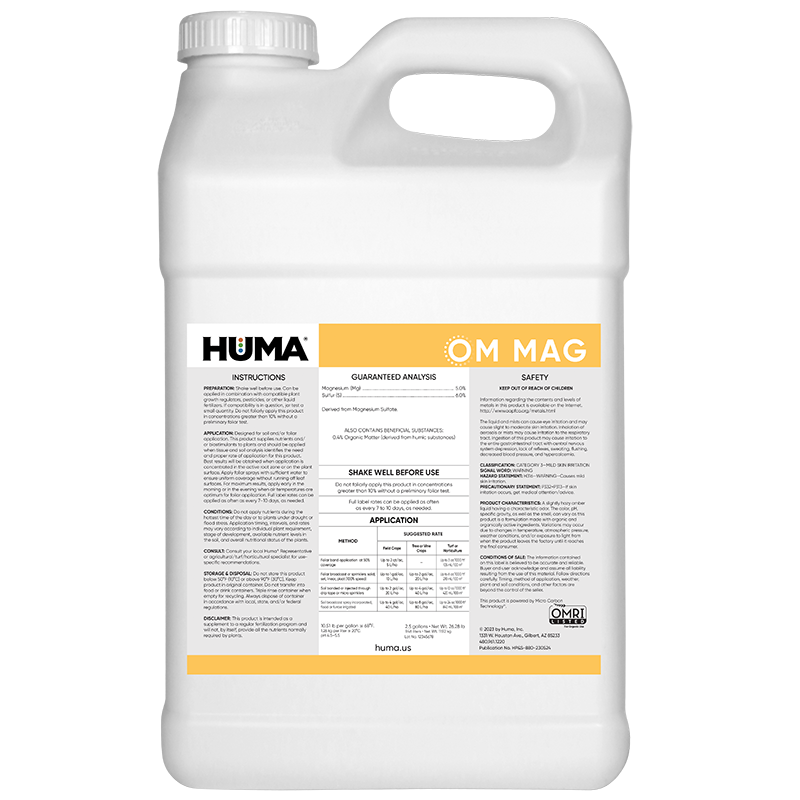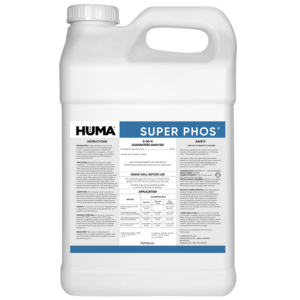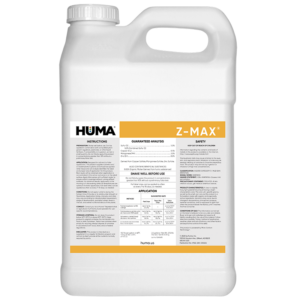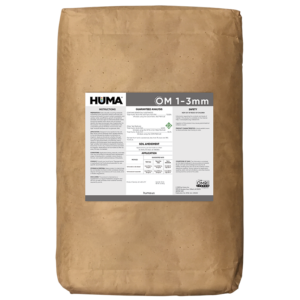OM MAG
Benefits of Use:
- Effectively treats magnesium deficiency symptoms
- Provides quick crop response and can be applied just prior to actual crop need
- Can be applied foliarly (according to label directions) without risk of phytotoxicity
- Can be effectively tank-mixed with other organic crop inputs
- Resists tie-up in the soil and remains available through the plant root system
- Essential core of the chlorophyll molecule
- Is active in the translocation of starches necessary for sugar formation
- Acts as a carrier for plant phosphorus
- Regulates the uptake of other plant nutrients
- Enhances oil and fat formation
FAQs
Related Products
Related Case Studies

Huma® Organic Fertilizers Easy to Use, Improve Yield on Organic White Corn
Objective The objective of this field trial was for the grower to evaluate the ease of use and the effectiveness of 4 OMRI-Listed liquid Huma® organic crop nutrition products based on known field deficiencies. Materials & Methods The organic producer provided 2 80-acre plots of organic white corn in eastern Nebraska that was at the
Related Blog Posts

This Week in Ag #63
“Plants sure know the difference between rainwater and hose water.” That was my wife’s observation Saturday morning, after seeing the rapid overnight growth, beautiful green color, and new blooms from our garden plants, following a thunderstorm that brought a half-inch of rain.

This Week in Ag #3
There are lots of definitions floating around for regenerative agriculture. But the best and simplest I’ve heard was from Soilcraft. They define regen ag as adding “life.” When you think about it, the practices of no-till/low-till, crop rotation, cover crops, manure and biological products all help create, stimulate, prolong and accelerate more diverse life in the

This Week in Ag #56
We’re all a wee bit Irish come Sunday, even if your family tree has no roots in the Emerald Isle. And no holiday is more linked to a particular plant than St. Patrick’s Day is to the shamrock (which is actually a white clover). The relationship’s origins trace back 16 centuries ago, when the future Patron Saint






